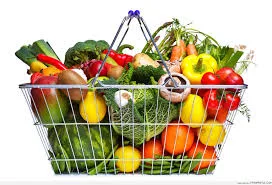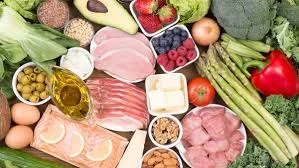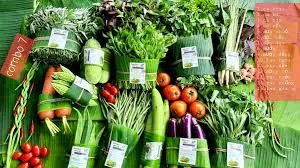News
Beyond the Basket: Building a Community of Trust and Loyalty for Pureluis
The modern consumer has endless options. Their loyalty is not bought with discounts; it’s earned through shared values and consistent experience. For Pureluis, community is the most powerful growth engine available. This guide details the step-by-step strategy to transform satisfied customers into vocal advocates who champion your clean food mission.
1. The Loyalty Mindset: Why Community is the New Cart
We need to shift our focus from optimizing the single transaction to optimizing the lifetime relationship. Loyalty means a customer chooses Pureluis even when a competitor offers a lower price.
1.1. Defining the Pureluis Community (Values over Transactions)
The Pureluis community isn’t just people who buy food; they are people who prioritize clean sourcing, transparency, and family health.
- The Shared Identity: Our community members are proud to be smart, conscious consumers who don’t compromise on quality. Our messaging must constantly reinforce this identity: “You choose Pureluis because you demand the best for your family.”
- The Goal: Our content and platforms should allow members to connect with each other over these shared values, not just connect with the brand. This self-sustaining network is the true definition of community.
1.2. The Economics of Loyalty: CLV vs. Acquisition Cost
The math behind loyalty is simple: acquiring a new customer is vastly more expensive than retaining an existing one.
- Customer Lifetime Value (CLV): A loyal customer who buys from Pureluis for five years is worth exponentially more than a customer who buys once during a sale. Our loyalty programs must be designed to incrementally increase the duration of that customer relationship.
- The Advocacy Multiplier: When a loyal customer refers a new buyer, the acquisition cost is zero, and the new buyer often enters with a higher level of trust. This “free” marketing is the most powerful result of a strong community.
2. Digital Community Pillars: The E-Commerce Ecosystem
The digital spaces where customers interact with Pureluis must be intentional, fostering transparency and conversation.
2.1. Mastering the Customer Review Loop (Authenticity and Response)
Reviews are the social proof that drives new customer trust. We must treat every review—good or bad—as a direct communication opportunity.
2.1.1. Handling Negative Feedback Transparently
A negative review handled well is more powerful than ten positive reviews. It shows accountability.
- The 3-Step Protocol: Acknowledge the issue immediately (e.g., “We are so sorry this happened”). Validate the complaint by referencing our internal systems (e.g., “We have checked the Batch ID and found a temperature fluctuation on that route”). Offer a Resolution publicly (e.g., “We have already refunded your order and will contact you directly to ensure this never happens again”). This demonstrates that our Source Traceability system works even when things go wrong.
2.1.2. Turning Five-Star Reviews into Shareable Content
Positive reviews are often generic. We need to encourage specific, authentic content.
- The Challenge: Encourage customers to leave reviews that describe how they used the product (e.g., “The chicken made the perfect stir-fry for my keto diet”).
- The Amplification: Select the best, most detailed reviews and turn them into simple, branded social media graphics, always linking back to the product. This uses customer language to sell the product’s benefits.
2.2. The Private Social Group Strategy (Creating a VIP Space)
Create a closed, private space (e.g., a Facebook Group or community forum) exclusively for Pureluis customers. This fosters exclusivity and deep connection.
- Moderation is Key: The group must be actively managed by a designated community leader who is knowledgeable about clean eating and Pureluis products. The leader’s role is to facilitate conversations between members, not just broadcast marketing messages.
- Content Exclusivity: This group is where you reward your most loyal customers. Offer early access to new produce (e.g., “Be the first 50 people to try our new organic mountain greens!”), or conduct exclusive Q&A sessions with the farmers or the Pureluis sourcing expert.
2.3. Personalized Email & Messaging (Beyond Discounts)
Stop sending bulk, generic emails. Personalization must be based on the customer’s purchase history and content consumption.
- Recipe Follow-Up: If a customer buys chicken, send them an email two days later with a simple, high-converting clean chicken recipe (from our menu guides). This provides value when they need it most (when the product is fresh in their fridge).
- Re-Ordering Nudges: Track the typical lifespan of staples (like eggs or oil). Send a gentle, non-aggressive reminder email when they are likely running low (e.g., “Time to check your egg supply? Your last order was 10 days ago.”)
3. Advocacy and Rewards: Turning Buyers into Believers
A true community member doesn’t just buy; they recommend. A well-designed loyalty program recognizes and rewards this behavior.
3.1. Designing a Tiered Loyalty Program (Value vs. Volume)
The best programs offer escalating value based on the depth of engagement, not just total money spent.
3.1.1. Tier 1: The Insider (Exclusive Content Access)
- Criteria: Any customer who has made 3+ purchases.
- Reward: Access to the Private Social Group (Section 2.2), early release of expert content (like these guides), and exclusive recipes. The reward is knowledge and community, which costs the company very little.
3.1.2. Tier 2: The Advocate (Referral Rewards)
- Criteria: Any customer who has successfully referred 1-2 new paying customers.
- Reward: Higher percentage discounts on their next order, a free premium product sample (e.g., a high-value cut of Verified Beef), and a birthday gift. The reward is monetary value and recognition.
3.1.3. Tier 3: The Ambassador (Product Testing/Co-creation)
- Criteria: Customers who have referred 3+ customers or have spent the most over 12 months.
- Reward: Invitation to co-create product bundles, free annual product testing boxes, direct consultation with the Pureluis sourcing team, and the highest-level discount. The reward is influence and VIP status.
3.2. The Referral System: Simple, Clear, and Generous

A complex referral system is never used. It must be a two-sided win.
- The Offer: Make the reward immediately visible and generous for both parties (e.g., “Give a Friend 15% off their first order, Get 15% off your next order”).
- Easy Sharing: Provide a unique, easily copy-and-paste link or code that can be shared via SMS, email, or social media with one click.
3.3. User-Generated Content (UGC) Strategy
UGC—photos, recipes, and videos created by customers—is the most authentic marketing available.
- The Challenge: Run a weekly UGC campaign (e.g., #PureluisPlates) asking customers to share photos of their meals made with Pureluis ingredients.
- The Reward: Feature the best submissions prominently on the website and social media. The reward is public recognition and a small gift certificate. When potential customers see real people using the products, the authenticity is unbeatable.
4. Education and Expert Authority: The Content Community
The articles we are creating are not just for SEO; they are the educational backbone of your community. People join communities to learn and improve.
4.1. The Role of Live Q&A and Webinars (Expert Access)
Customers have complex questions about food safety and clean eating. Provide direct access to expertise.
- The Format: Host monthly live Q&A sessions featuring a Pureluis sourcing manager or a certified nutritionist. The topics should be timely (e.g., “Seasonal Produce Q&A,” “Demystifying the Expiration Date”).
- The Value: This interaction humanizes the brand, proves the company has genuine expertise, and builds trust far faster than reading a static article.
4.2. Recipe Sharing and Meal Planning Challenges
Turn the content we’ve developed (like the 7-Day Meal Plan) into an interactive, community event.
- The Challenge: Run a monthly “Pureluis Meal Prep Challenge.” Provide the shopping list and recipes, and ask community members to post their prep photos and results in the private group.
- The Engagement: This creates camaraderie, encourages accountability, and drives sales of the specific challenge ingredients.
4.3. The Local Partnership Network (Farmers and Chefs)
Showcase the real faces behind the food and the local chefs who use Pureluis ingredients.
- Farmer Spotlights: Post short video interviews with the farmers who supply your meat and produce, emphasizing their commitment to clean practices (tying back to the Source Traceability system).
- Chef Collaborations: Partner with local, health-focused chefs to create exclusive recipes using Pureluis ingredients. This validates the quality of the products and provides high-value, aspirational content.
5. Operational Loyalty: When the Delivery Builds Trust
Loyalty can be won or lost in the final interaction: the delivery. Our operation must be designed to reinforce the clean, high-quality promise.
5.1. The Unboxing Experience (Packaging as a Loyalty Tool)
The packaging should communicate the brand’s values immediately.
- The Clean Commitment: Use sustainable, minimal packaging that reflects your environmental care. Avoid excessive plastic.
- The Personal Touch: Include a small, handwritten note or a unique, seasonal product sample (like a single piece of a new tropical fruit) with every order. This elevates the experience from a transaction to a personal delivery.
- Temperature Verification: Ensure cold items are visibly cold upon arrival. The presence of dry ice or gel packs should reassure the customer that the cold chain was maintained.
5.2. Proactive Communication and Crisis Management
Never let a customer wonder what happened to their order. Over-communicate, especially during a delay.
- Alert System: Implement a clear SMS/App alert system for every step (Order Confirmed, Order Picked, Order Out for Delivery).
- Addressing Issues: If a delivery is delayed by more than 15 minutes, the driver or customer service should call the customer before the customer calls you. This proactive communication turns potential frustration into appreciation.
5.3. The Feedback Loop: Measuring NPS and Acting on It
The Net Promoter Score (NPS) is the simplest way to measure community health. It asks: “How likely are you to recommend Pureluis to a friend?”
- The Goal: Track NPS weekly. Analyze the “Detractors” (those who score low) and contact them directly to understand the root cause of their low score.
- Closing the Loop: Use the feedback—especially from the Detractors—to make immediate operational or product changes. Showing the community that their feedback directly leads to improvements is the deepest form of loyalty building.
6. Conclusion: The Sustainable Growth Engine
Building community is not a quick fix; it’s a long-term investment. By designing every customer interaction—from the review response to the driver’s smile—to reinforce the core values of clean sourcing and absolute trust, Pureluis will transform into a brand powered by true advocates. This loyal community is not just your customer base; it is your most effective, most sustainable growth engine.
7. Advanced Community Management: Segmenting, Personalizing, and Rewarding Behavior
Building loyalty at scale requires moving beyond basic transaction history. We must use data to segment the community, identify the type of loyalty they exhibit, and reward that behavior specifically. This creates high-value relationships and maximizes Customer Lifetime Value (CLV).
7.1. Segmenting the Community: Identifying Loyalty Types
We can break down the loyal customer base into three distinct behavioral segments. Each segment requires a tailored approach.
7.1.1. The Transactional Loyalists (The Savvy Shoppers)
- Behavior: Highly responsive to discounts, buy only when promotions are active, and have high purchase volume but often sporadic frequency.
- Management Strategy: Do not reward them with early access or community influence. Instead, reward them with tiered discounts based on volume (e.g., “Spend $X, get 15% off your next bulk order”). Their loyalty is price-driven; respect that, but manage the margin tightly. Use personalized emails to highlight budget guides and bulk-buy opportunities, reinforcing the value proposition without cheapening the brand.
7.1.2. The Habitual Loyalists (The Reliable Customers)
- Behavior: Low price sensitivity, consistent purchase frequency (e.g., buying the same staples every week), and high predictability. They rarely complain but also rarely advocate publicly.
- Management Strategy: Reward them with convenience and recognition. Offer free expedited shipping, automated replenishment suggestions (using AI to predict when they run out of eggs), and free small upgrades (e.g., “Enjoy a free upgrade to premium organic ginger this week!”). Their loyalty is driven by ease and reliability—make their life simpler.
7.1.3. The Brand Loyalists (The True Advocates)
- Behavior: High engagement with content, frequent public advocacy (reviews, social shares), high referral rate, and low price sensitivity. They view Pureluis as part of their identity.
- Management Strategy: Reward them with influence and access. Invite them to exclusive product testing panels, ask for their input on new inventory decisions, and give them the highest tier in the referral program. They are your best marketing asset; their reward is feeling like they are truly part of the Pureluis mission.
7.2. Implementing Behavioral Personalization

Personalization should be based on action, not just demographics. This requires integrating data from the e-commerce platform with the content management system.
- Content-Based Nurturing: If a customer repeatedly clicks on articles related to Seafood Sourcing, stop sending them generic meat promotions. Instead, send them exclusive content (Section 2.2) focused entirely on the cleanliness of the ocean catch or a profile of the specific fisherman Pureluis works with. This deepens their existing interest.
- Exit Intent Offers: If a customer navigates away from the checkout page after viewing Eggs, the exit-intent popup should not offer a discount. Instead, it should offer a link to the “Why Pasture-Raised Eggs Matter” guide (Staple 1), addressing the likely reason for hesitation (quality/trust), not price.
7.3. Building a Community Calendar
Create predictable, themed events that give the community something to anticipate and look forward to, driving sustained engagement.
8. The Future of Trust: Integrating Technology for Decentralized Community
As the market evolves, so must our trust-building tools. Leveraging emerging technology doesn’t just make our operations more efficient; it makes our promise of transparency verifiable by anyone, anywhere.
8.1. Decentralized Traceability and the Customer Wallet
The future of the Batch ID system (Section 9) lies in integrating it with customer data.
- Verifiable Receipts: When a customer purchases a product, the Batch ID and all verifiable sourcing data (e.g., farmer, temperature log) should be recorded in a personal, digital “wallet” linked to their Pureluis account.
- Scalable Proof: This digital record becomes an undeniable, tamper-proof certificate of purity for the food they bought. If they ever need to prove the quality of the product to a friend, they have a secure, verifiable record—not just a paper receipt. This decentralizes the burden of proof from Pureluis to the customer’s own wallet, greatly increasing confidence.
8.2. AI for Hyper-Personalized Community Moderation
Managing a large, active community (Section 2.2) is time-consuming. AI tools can enhance the human touch, not replace it.
- Sentiment Analysis: Deploy AI to actively monitor the community forum/group for shifts in sentiment or the appearance of recurring complaints about a specific product or delivery route. This allows the human community manager to intervene proactively before a small issue escalates into a public crisis.
- Automated Content Tagging: Use AI to analyze member questions and automatically tag the best, most relevant expert content (like a guide or recipe) to answer the query instantly. This provides immediate value to members and reduces the workload on the human moderator.
8.3. Building Influence through Gamification and Badges
Reward systems can be gamified to encourage the exact behaviors we want to promote (referrals, reviews, content sharing).
- The Advocate Badge System: Introduce digital “badges” or titles displayed next to a member’s name in the community forum.
- “Clean Cook Master” Badge: Earned by sharing 5+ recipes using Pureluis ingredients.
- “Verified Advocate” Badge: Earned by referring 3+ new customers.
- “Audit Advisor” Badge: Earned by consistently providing helpful feedback on new products.
- The Result: This system provides social status within the community, which is often a more powerful motivator than a simple discount, transforming loyalty into a fun, competitive pursuit. The reward is influence and social status, which scales infinitely.
By embracing these advanced, data-driven, and forward-looking strategies, Pureluis builds a relationship with its customers that is resistant to competitive pricing and robust enough to handle future challenges. The community becomes a scalable, loyal engine for sustainable growth.
9. Local Impact and Strategic Partnerships (The Community’s Reach)
A strong brand community is not insular; it looks outward. Pureluis must demonstrate that its mission goes beyond the shopping cart and actively contributes to the health and sustainability of the local area. This final layer of purpose builds a fierce, emotional loyalty that pure discounts can never achieve.
9.1. Zero-Waste Food Donation Program
Our focus on clean, high-quality sourcing means we sometimes have beautiful food that is simply too ripe for standard delivery but perfectly good for immediate consumption.
- The Program: Establish partnerships with local, certified food banks, shelters, or community kitchens. Instead of discarding perfectly good, unverified food due to a short shelf life, redirect it immediately.
- The Communication: Crucially, communicate this effort to the community. Frame it as “The Pureluis Promise: Food doesn’t go to waste; it goes to those who need it.” This connects the brand’s value proposition (clean food) to a social mission (zero waste).
- Customer Participation: Give loyal customers the option to digitally “donate a box” when they place their order, turning a small fee into a highly visible act of shared purpose.
9.2. Sponsoring Local Health and Wellness Events
Community loyalty is built by showing up where your customers are.
- Targeted Sponsorship: Avoid generic event sponsorship. Focus only on local events that align perfectly with the clean eating mission: local runs, community gardening projects, or children’s health workshops.
- The Pureluis Presence: Don’t just slap a logo on a banner. Pureluis should be present with a “Hydration Station” featuring infused water (Section 7) and samples of simple, clean fruit (Section 4). This positions the brand as a helpful, active participant in the local wellness ecosystem.
9.3. Building an Educational Internship Pipeline
Investing in the next generation reinforces your authority and commitment to the future of clean sourcing.
- University Partnerships: Create a small internship program with local universities, focusing on agriculture, supply chain management, or nutrition.
- The Brand Benefit: These interns can be tasked with helping to audit Pureluis suppliers (Section 2.1) or helping to develop new recipe content. This allows the brand to feature young, local talent in its content, reinforcing the mission to support the local ecosystem while simultaneously gaining valuable, specialized labor.
This final strategic layer of local impact completes the guide, proving that Pureluis is not only the best choice for the family’s health but also the best partner for the community’s well-being.

